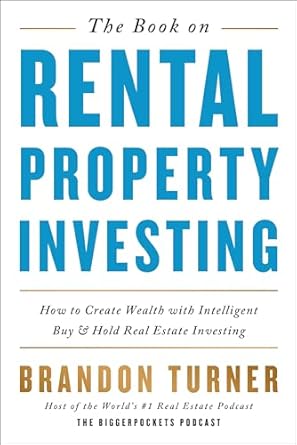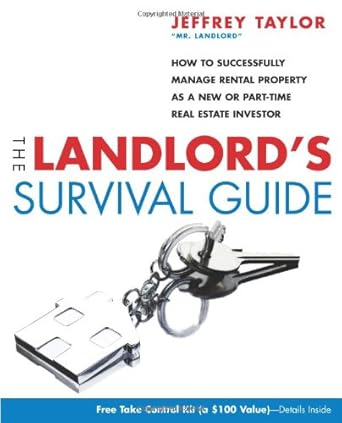Converting a Primary Residence to a Rental Property
There are many steps to this process. I recall my first time.
When I decided to convert a home to a rental property, the idea felt easy: advertise, sign up prospective tenants, and collect rent to generate passive income. As I dug into converting primary residence, though, I see the fine print. I have to record the purchase price, track mortgage interest, and log every depreciation expense for tax purposes, because rental or sales tax rules and ordinary income treatment will likely govern the income subject to review.
Managed well, those details unlock tax deductions, create deferred taxes through future exchanges, and help me generate additional income while protecting long-term property value. If I ignore them, I face potential tax consequences and may pay taxes sooner than necessary. Converting rental property takes more than a lease; it demands a clear cash-flow plan, airtight books, and a solid exit strategy.
Recommended Reading for Aspiring Landlords
As an Amazon Affiliate, I earn from qualifying purchases.

The Book on Rental Property Investing by Brandon Turner
Covers buy-and-hold strategies, how to evaluate investments, how to generate long-term rental income. Great for people turning their primary residence into investment real estate.

Buy It, Rent It, Profit! by Bryan Chavis
Very practical for landlords: includes cash flow, market analysis, and making the numbers work (which aligns with your feasibility sections).

The Landlord’s Survival Guide by Jeffrey Taylor
Helpful for the operational side—tenant relations, day-to-day management, maintaining profitability.
The Paperwork Process
When my primary residence converted into a rental property, I followed a checklist that kept lenders, insurers, and taxing authorities satisfied while avoiding headaches that trip up new landlords.
1). Lock in the baseline numbers
I confirmed the original purchase price from the closing statement. An independent appraisal nailed down today’s market value, the figure that drives depreciation and future capital gains taxes.
2). Clear the occupancy clause
The mortgage note required owner occupancy for at least twelve months. I hit that mark, then filed a change-of-use letter with the lender. Skipping this notice risks a due-on-sale call.
3). Upgrade insurance and open clean books
A landlord (DP-3) policy replaced the old homeowner policy and added liability protection. Separate bank and credit accounts handle rent and repairs. Straight-through recordkeeping keeps every dollar easy to track for tax purposes.
4). Satisfy local compliance
City hall wanted a rental license, annual inspection, and business-tax registration. Forms went in online, fees got paid, approvals went into a cloud folder labeled “rental property turning.”
5). Build the depreciation schedule
Only the structure depreciates, not the land. The CPA divided building cost over 27.5 years and entered the first depreciation expense on Schedule E. That write-off shields ordinary rental income and supports deferred taxes if a future 1031 exchange happens.
6). Prepare tenant documents
A state-specific lease, lead-paint disclosure, and welcome packet set clear expectations. Digital signatures dropped the paperwork loop from days to minutes, and each file rests in a drive folder tagged with the property address.
Common mistakes I see (and avoid)
Triggers loan default for unauthorized use change.
Inflates deductions and invites an audit.
Muddy books complicate audits and loan underwriting.
Fines stack fast and shut the door on new leases.
Key timing rules
- One-year lender rule – Most owner-occupied mortgages permit a use change after twelve months.
- Two-out-of-five rule – Live in the home twenty-four months within the five years before sale to claim the primary-residence capital-gains exclusion. Convert too soon, and a portion of that shelter disappears.
Careful adherence to these steps and timelines keeps tax bills predictable, cushions capital gains exposure, and positions the home to generate passive income without drama.
First-Look Feasibility. Will It Cash-Flow?
Quick ROI Formula
- Potential rental income – Pull fair-market comparables from the local rental market.
- Operating costs – Include property taxes, insurance, routine maintenance, and a 5% reserve for capital improvements.
- Financing – Replace owner-occupied mortgage payments with an investment-property rate quote.
- Net income – Potential rental income minus true costs yields projected cash flow (use a rental property analysis spreadsheet to calculate and track these figures).
If the figure is razor-thin, advise clients to run a stress test at 90% occupancy and a 10% spike in expenses. Cash flow that survives the stress test signals a sustainable rental property converting from personal residence to income producer.
Mortgage & Re-Fi Triggers
Most occupancy clauses read “borrower will occupy as a primary residence for at least 12 months.” Converting a primary residence earlier requires lender consent or a refinance. Present multiple options.
- Rate-and-term refinance to lock in an investor rate without additional capital.
- Cash-out refinance to extract equity for capital improvements that command higher rent.
- Portfolio or DSCR loans for clients holding other rental properties who prefer underwriting based on rental income, not personal debt-to-income.
Tip: Build a comparison sheet that shows monthly payment, interest accrual, and net cash flow for each scenario.
Compliance & Risk Mitigation
Legal & Zoning Checklist
- Landlord-tenant statutes – State rules on security-deposit handling, habitability standards, and eviction timelines.
- Municipal zoning – Verify the residence turned rental complies with short- or long-term occupancy limits.
- Homeowners association bylaws – Many HOAs restrict lease terms under 12 months.
Insurance Upgrade
An owner-occupied policy will not cover tenant-caused losses. Instruct clients to:
- Obtain a landlord (DP-3) policy that covers loss-of-rent, liability, and dwelling.
- Notify the insurance provider in writing once the residence to a rental transition occurs; premiums are tax-deductible as an ordinary rental real estate expense.

Tax & Accounting Structure
Capital Gains vs. Depreciation Recapture
- Using the primary residence exclusion (§ 121) the owner can avoid capital gains taxes on up to $250k ($500k married) if they sell within three years of moving out.
- Hold the property longer and it morphs into a rental property owner asset, which unlocks depreciation deductions, 27.5 years straight-line on improvements, not the land.
- When the property eventually sells, accumulated depreciation recapture is taxed at the owner’s regular income tax rate (max 25 %) and remaining gain at capital-gains rates.
Entity Choice & Taxable Rental Income
Many small landlords deed the home to an LLC for liability insulation and streamlined tax reporting, but a title transfer can trigger due-on-sale clauses. If the mortgage balance is low, an LLC may still be prudent; otherwise, hold in a living trust and carry robust umbrella insurance.
- Report rental income and expenses on Schedule E.
- Net income passes through as taxable income and may be sheltered by passive-loss rules up to $25k (subject to income phase-outs).
- Self-employment tax does not apply to passive rental real estate activities, one key tax benefit over fix-and-flip income classified as ordinary.
1031 Exchange Planning
Advise clients who plan to scale that converting your primary residence to a rental starts the clock toward a like-kind exchange. Swap into a replacement property of equal or greater value to defer taxes on capital gains and depreciation recapture, powerful fuel for portfolio growth.
Operational Set-Up
Pinpoint Fair Market Value & Maintenance Reserve
Savvy investors set rent 2–3 % below the local market’s top tier to attract stable, longer-term tenants, reduce turnover, and protect cash flow. Pair the rent goal with a maintenance reserve equal to one-twelfth of projected annual repairs.
Tech Stack & Property Management Company
For owners running multiple doors, link a CRM to a property-management platform such as RentManager or AppFolio. You can automate things using the following tools.
- Rent collection (ACH or credit)
- Work-order routing
- Owner statements
If the client prefers an entirely hands-off approach, a property management company charging 8–10 % of gross rents plus leasing fees can handle rent collection, inspections, and tenant communication, fully deductible legal fees in the eyes of the IRS.
Marketing & Tenant Acquisition
Ideal Resident Profile & Screening
- Define criteria tied to the property’s market value: income ≥ 3× rent, credit ≥ 650, verifiable rental payments history.
- Obtain written consent to pull credit.
- Call prior landlords.
- Comply with Fair Housing, screen potential tenants the same way, every time.
Listing Distribution & Showing Automation
- Syndicate to Zillow, Apartments.com, and local MLS for maximum exposure.
- Deploy self-service lockbox showings for speed.
- Offer a pre-qualification questionnaire online; save staff time and reduce vacancy days.
I like using a rental inquiry email template for marketing.
Performance KPIs & Ongoing Optimization
Track these metrics monthly.
| KPI | Target | Why It Matters |
|---|---|---|
| Vacancy Rate | ≤ 5 % | Direct hit to cash flow |
| Turnover Cost | < 1 month rent | Measures how well you retain residents |
| Net Operating Income | Rising ≥ 3 % YoY | Signals healthy rent growth vs. expenses |
| Cash-on-Cash Return | ≥ 8 % | Benchmark for rental real estate investors |
When equity climbs and rates dip, re-lever to extract capital for acquiring other rental properties. If cap rates compress, consider a 1031 into multi-family or commercial, consult a qualified tax professional to map the tax implications.
Common Pitfalls & How Pros Avoid Them
Build a five-year capital improvements schedule upfront.
Use local counsel or a compliance module in your PM software.
Open a property-level LOC for liquidity that doesn’t blur personal vs. rental real estate finances.
Conduct semi-annual inspections and offer renewal bonuses to secure longer terms.
Next Steps. Does One Scale or Exit?
Your former personal residence is now a performing asset.
Scale
Leverage growing equity and cash flow to acquire an additional investment property within 18 months.
Stabilize
Hold for passive income and let depreciation deductions offset taxable rental income.
Exchange
Sell after the two-year seasoning window and roll gains into a higher-value replacement property, deferring taxes through a 1031 strategy.
Key Takeaways for Decision-Makers
- Tax benefits and rental income are compelling, but depreciation recapture tax awaits on sale, plan exit strategies early.
- Treat the property like a small business: build systems, track KPIs, and hire specialists where ROI is clear.
- A deliberate, rules-based approach converts your primary residence into a rental property that generates passive income, minimizes tax liability, and positions you for long-term wealth through owning real estate.
Check Back for Updates on How to Convert Your Home to a Rental Property
I update this space whenever I uncover smarter ways of converting my primary residence into a profitable rental property and managing the rental income that follows. Each time I adjust the strategy, I track how those moves affect capital gains taxes, annual property taxes, and the taxable income that flows onto Schedule E. I like to note every new depreciation expense so the future depreciation recapture tax never catches me off guard, and I flag any changes that shift the burden of self employment tax. Check back often! I refine the process with real numbers and fresh insights that keep the asset performing and the paperwork airtight.
About the Author

Joseph E. Stephenson, REALTOR®
License #00054082 | Kansas & Missouri
Affiliated with Welch & Company (License #CO00000477)
Joseph E. Stephenson is a licensed real estate professional in Kansas and Missouri with a career built on dedication to integrity and client-focused service. To learn more about how Joseph can assist you in your real estate endeavors, visit his REALTOR® profile at realtor.com.
Verify Joe’s Real Estate License Credentials
Real Estate Agent License VerificationVerify Joe’s Business Credentials
Joseph E. Stephenson also operates a business named Stephenson Residential, LLC. You can verify the business at the Kansas Secretary of State’s website.
Verify Business Credentials




